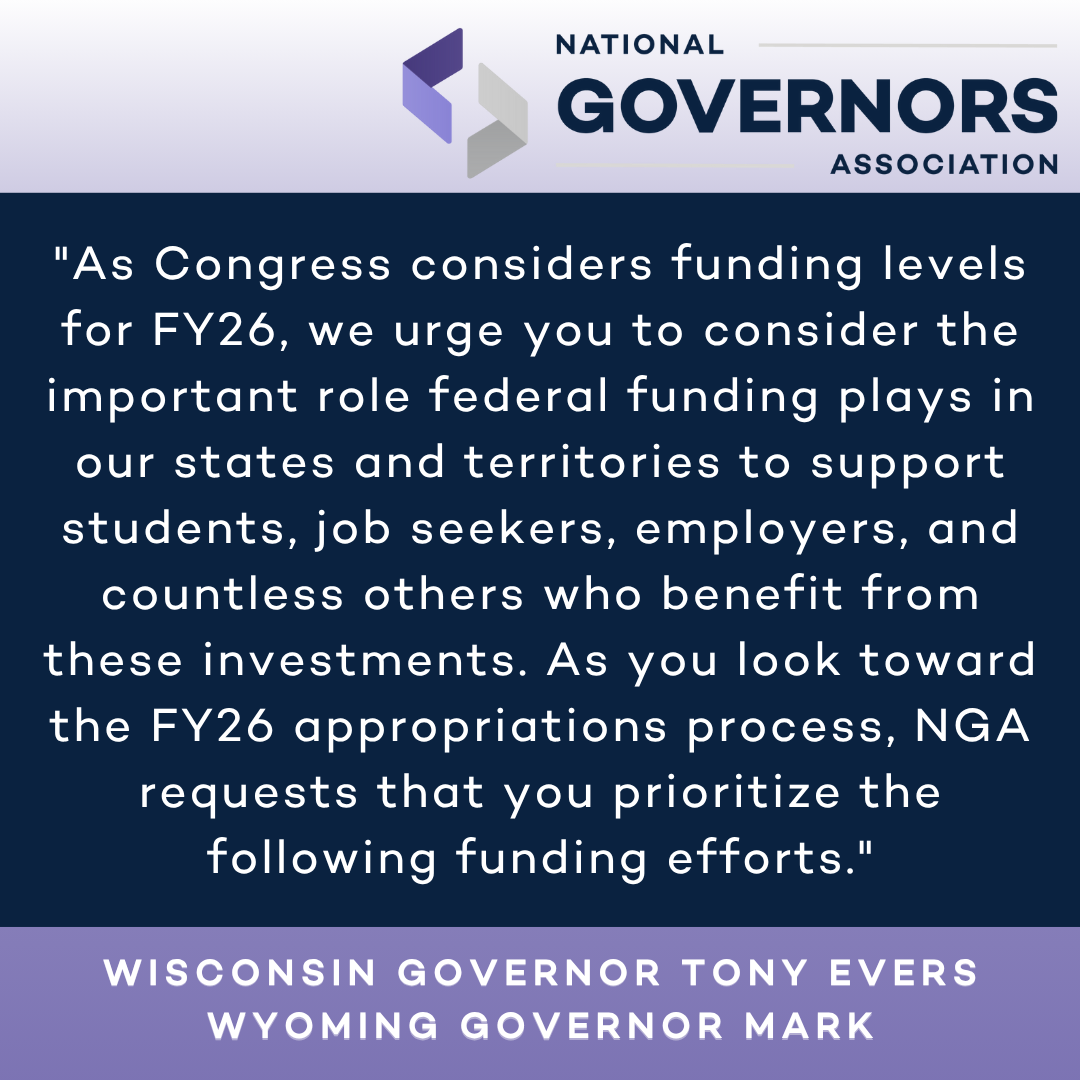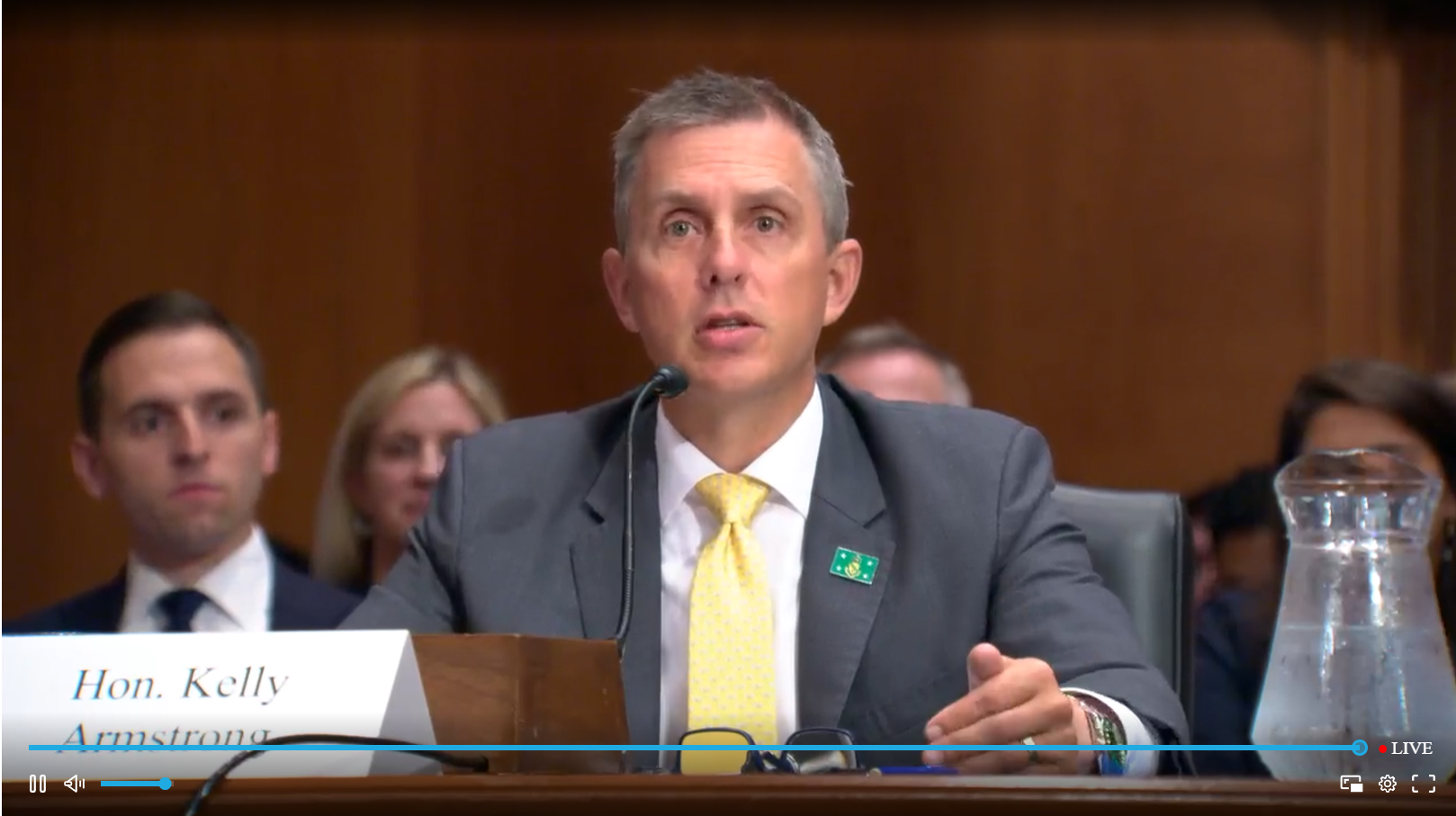The National Governors Association (NGA) held the 2023 Governors’ Advisors Energy Policy Institute in Providence, Rhode Island, August 1-3. This annual Energy Policy Institute convened Governors’ energy policy staff from across the country alongside experts, federal officials, private-sector practitioners and NGA partners to share energy policy solutions, learn best practices and participate in peer-to-peer exchanges on timely energy policy challenges facing Governors of states and territories. More than 100 attendees, including Governors’ advisors from 27 states and territories, attended the Energy Policy Institute.
The three-day event covered a vast array of policy topics, including transmission, energy security planning, energy resilience, transportation electrification, innovations in advanced nuclear, clean hydrogen, carbon capture, and supply chain and workforce challenges in the energy sector. In addition to policy-driven panels, participants from states, territories, the federal government and the private-sector had the opportunity to connect and discuss important topics such as states’ energy policy priorities and goals, federal funding opportunities and regional transmission planning. In small group discussions, state and territory attendees were able to engage directly with representatives from program offices representing the U.S. Departments of Agriculture, Energy, Interior and Treasury as well as the Joint Office of Energy and Transportation. On the final day of the Institute, attendees toured the Ørsted offshore wind manufacturing hub at ProvPort, a deepwater port in Providence.

Energy Leadership from our Hosts, the State of Rhode Island

On August 1, Rhode Island Governor Dan McKee joined Energy Policy Institute participants to share his insights on Rhode Island’s energy future and discuss the strategies Rhode Island is taking to increase energy affordability and efficiency while bringing clean energy benefits direct to constituents. Governor McKee’s team participated actively throughout the event, discussing Rhode Island’s leadership on offshore wind development and manufacturing, regional transmission expansion, and energy efficiency and affordability.
Highlights from the Energy Policy Institute
The Role of the Governors Energy Policy Advisor
On August 1, the Energy Policy Institute kicked off with the Bootcamp for new Governors’ energy advisors. These state and territory-only sessions convened new-to-the-role and experienced Governors’ energy policy advisors from across the nation to meet their peers, share insights and advice, and learn strategies from one another on how to be effective in the unique role of an energy policy advisor. While each state and territory are unique, the peer-to-peer discussions in this session illuminated actionable strategies to set and meet Governors’ policy visions, engage with stakeholders and navigate potential challenges.
State/Territory & Federal Dialogues – the Energy Transformation
Governors across the nation are thinking critically about how to address demand challenges and increase energy system resilience. The passage of the Infrastructure Investment and Jobs Act (IIJA) in 2021 and the Inflation Reduction Act (IRA) in 2022 created many new federal funding opportunities for states to make investments in existing energy systems and programs, as well as innovative technologies. Between the IIJA and IRA, there are billions of dollars and hundreds of programs that states and territories can apply for. During the afternoon of the first day of the Energy Policy Institute, state and territory participants met in small groups with representatives from 12 federal agency offices. In these small group conversations, attendees discussed federal programs, shared innovative practices, explored funding implementation and made connections that fostered continued conversation throughout the event.
The federal agency offices represented included: the U.S. Department of Agriculture Rural Utilities Service; the U.S. Department of Energy (Grid Deployment Office, Loan Programs Office, Office of Cybersecurity, Energy Security, & Emergency Response, Office of Manufacturing & Energy Supply Chains, Office of Nuclear Energy, Office of State and Community Energy Programs); the U.S. Department of the Interior (Bureau of Land Management, Bureau of Ocean Energy Management, Bureau of Safety and Environmental Enforcement); the U.S. Department of Treasury; and the U.S. Joint Office of Energy & Transportation.
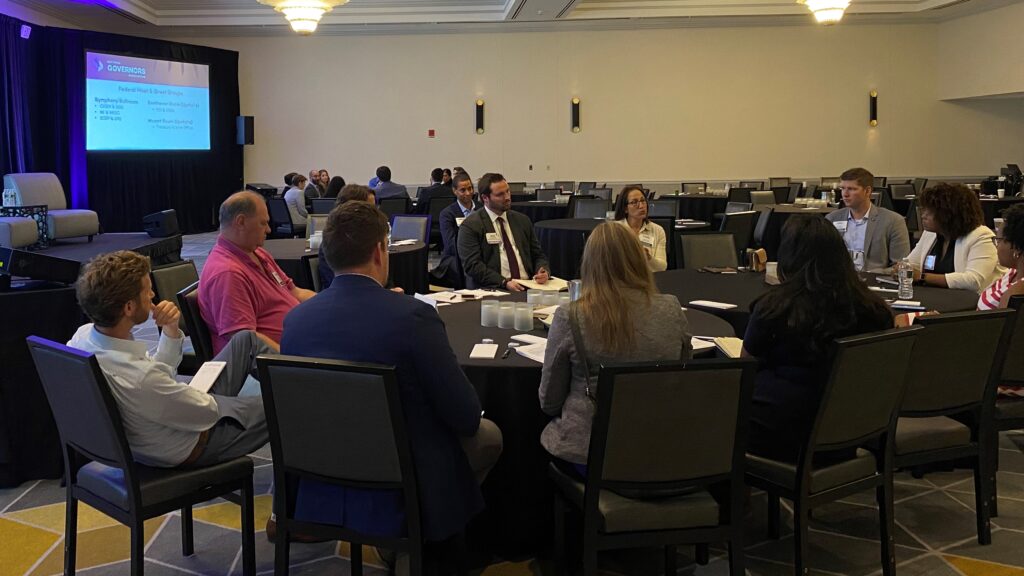
Regional, Multistate Collaboration for Transmission Expansion
During the morning of August 2, attendees focused on the importance of and challenges to transmission expansion. Jeffery Dennis, Deputy Director for Transmission with the Grid Deployment Office at the U.S. Department of Energy, kicked off the sessions by discussing the planning mechanisms and regulatory authorities that the U.S. Department of Energy can leverage to accelerate federal permitting of transmission. Linda George of the Rhode Island Division of Public Utilities and Carriers moderated and added a state perspective to this discussion. Administrator George and Mr. Dennis discussed the role of the newly formed Grid Deployment Office (GDO), including GDO’s triennial Transmission Needs Survey and ongoing Transmission Congestion Studies. This panel highlighted the shifting view of transmission development. In the past, private parties and quasi-governmental organizations coordinated transmission projects; however, the pressing need for more transmission has redefined the process and empowered Governors and states to take an active role. As Mr. Dennis pointed out, regional cooperation is key to long distance transmission development. Governors are crucial to these efforts both through their respective state governments – energy offices, public utility commissions, siting commissions – and through their ability to collaborate with their peer Governors in other states.
Shortly after the Energy Policy Institute, the U.S. Department of Energy (DOE) Grid Deployment Office announced that nine federal agencies, including DOE, had signed a Memorandum of Understanding (MOU) to expedite siting, permitting, and construction of electric transmission lines. This MOU makes DOE the lead agency for permitting review and imposed a two-year timeline for decisions on transmission siting and permitting.
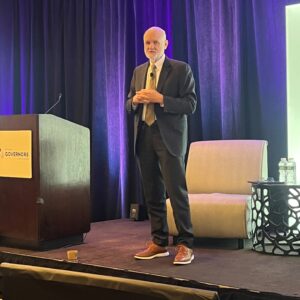
Federal Energy Regulatory Commission (FERC) Commissioner Mark Christie gave a keynote address on the federal regulatory landscape for transmission, including the levers that Governors can use to advance transmission, the importance of communicating with Public Utility Commissions (PUCs), and the significance of regional transmission organizations (RTOs). He urged participants to understand their state’s or territory’s laws around project approval and highlighted the importance of Certificates of Public Convenience and Necessity (CPCN) for local transmission projects.
Following the discussions on transmission from the federal perspective, the conversation turned to focus on the role interstate partnerships can play in addressing challenges and developing energy policy solutions. State, territory and private-sector participants were broken into regional groups to discuss multistate approaches to transmission buildout. Groups discussed region-specific concerns, challenges related to cost allocation for interstate transmission and stressed the need for continued interstate gubernatorial coordination on this topic. A subsequent commentary on these regional breakout discussions will be released soon.
Highlighted Governor-led Energy Projects
Rhode Island: Workforce & Offshore Wind Manufacturing
With the nation’s first offshore wind farm, Rhode Island established itself as a leader in offshore wind energy generation. To open the final day of the Institute, EPI attendees toured ProvPort, a deepwater port in Providence, and the Ørsted Offshore Wind Construction Hub where components of offshore wind turbines are manufactured for sites in development off the coasts of Rhode Island, Connecticut and New York. During this tour, attendees learned about the assembly of offshore wind turbines, the energy generation potential of offshore wind, and the workforce and supply chain mechanisms that are supporting offshore wind deployment in northeastern states.
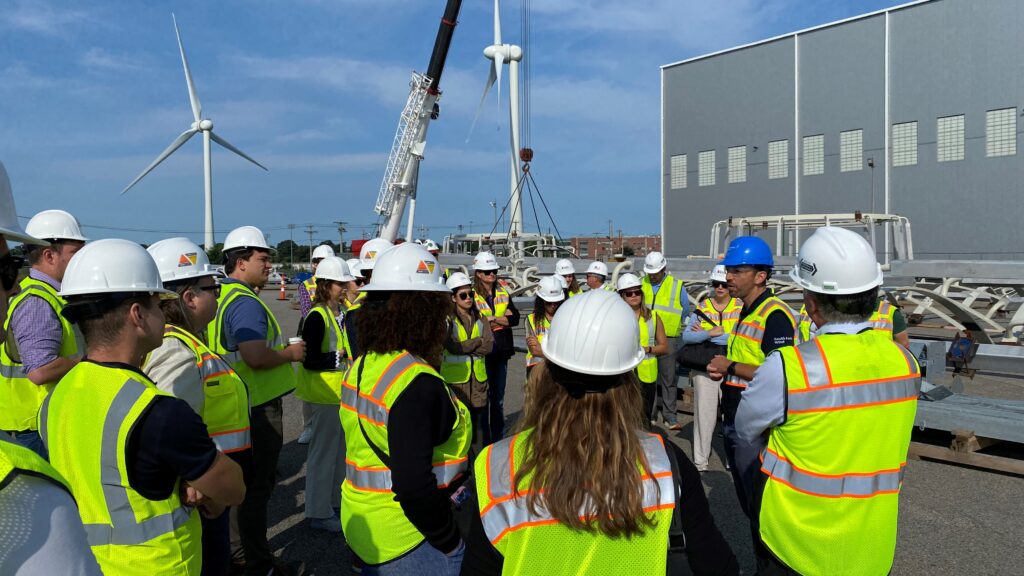
Virginia: State Energy Plan
Glenn Davis, Director of the Virginia Department of Energy, shared best practices on how Virginia developed and has begun implementing their 2022 State Energy Plan. The discussion focused on the approach Virginia took in developing their plan, the stakeholder engagement process, and the five pillars that shape Virginia’s energy policy: reliability, affordability, environmental stewardship, innovation and competition. The discussion also touched on how to plan for distributed energy resources, opportunities for new nuclear technologies and engaging utilities in the planning process.
Tennessee: Advanced Nuclear, SMRs

Michael Hendrix, a Special Advisor to Tennessee Governor Bill Lee, spoke on a panel with Kati Augsten from the Nuclear Energy Institute about advanced nuclear applications. Mr. Hendrix noted Governor Lee’s ambition to make Tennessee the nation’s leader on nuclear energy. Utilizing the benefits of the Oak Ridge National Lab and the Tennessee Valley Authority’s existing nuclear energy sites, Tennessee is well-positioned to utilize federal funding to make investments in advanced nuclear technologies such as small modular reactors (SMRs).
Louisiana: Grid Resilience, Resilience Planning
Edward O’Brien, a Senior Economist at the Louisiana State Energy Office, spoke on a panel focused on grid resilience alongside Jeannie Salo of Schneider Electric and Thomas King of the U.S. Department of Energy Grid Deployment Office. This discussion was moderated by Rhode Island Public Utilities Commissioner Abigail Anthony. Mr. O’Brien spoke about the importance of building resilient infrastructure and Louisiana’s head start on resilience planning due to their geographic vulnerabilities to severe weather. Louisiana will utilize federal Grid Resilience State Formula Grant funding (40101(d)) and continue to improve resilience through strategies like microgrids, distributed solar, vegetation management and infrastructure hardening.
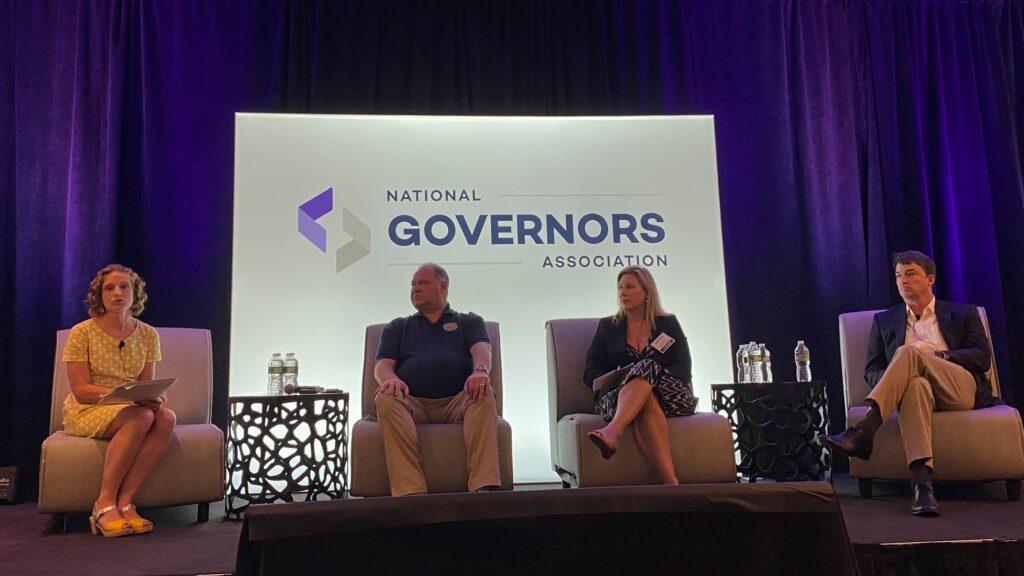
Massachusetts: State Energy Security Planning
Paul Holloway, the Emergency Planning and Energy Analyst for the Massachusetts Department of Energy Resources, spoke on a panel focused on state energy security planning alongside Adam Lee, Chief Security Officer at Dominion Energy, and Brandi Martin, State, Local, Tribal, and Territorial Program Manager at the U.S. DOE Office of Cybersecurity, Energy Security, an Emergency Response (CESER). Mr. Holloway spoke about the Massachusetts Energy Security Plan and strategies for states and territories to improve state energy security planning processes with a focus on incorporating cybersecurity and resilience in energy systems investments. Mr. Holloway noted the importance of stakeholder engagement, particularly with utilities, state and local agencies, and neighboring states, throughout the process of creating or updating an energy security plan.
As states and territories across the country undertake new and expanded state energy security planning processes, CESER is maintaining an in-depth library of planning resources for the states: https://www.energy.gov/ceser/state-energy-security-plan-sesp-resources
Adam Lee, the Chief Security Officer at Dominion Energy, spoke about the importance of prioritizing security in energy system planning. As one of the largest energy providers in the country, Dominion Energy heavily prioritizes the security of its energy systems. Mr. Lee discussed the productive working relationship between Dominion Energy and the Office of Virginia Governor Glenn Youngkin. In addition, Mr. Lee noted the importance of exercising state energy emergency plans in coordination with utilities.
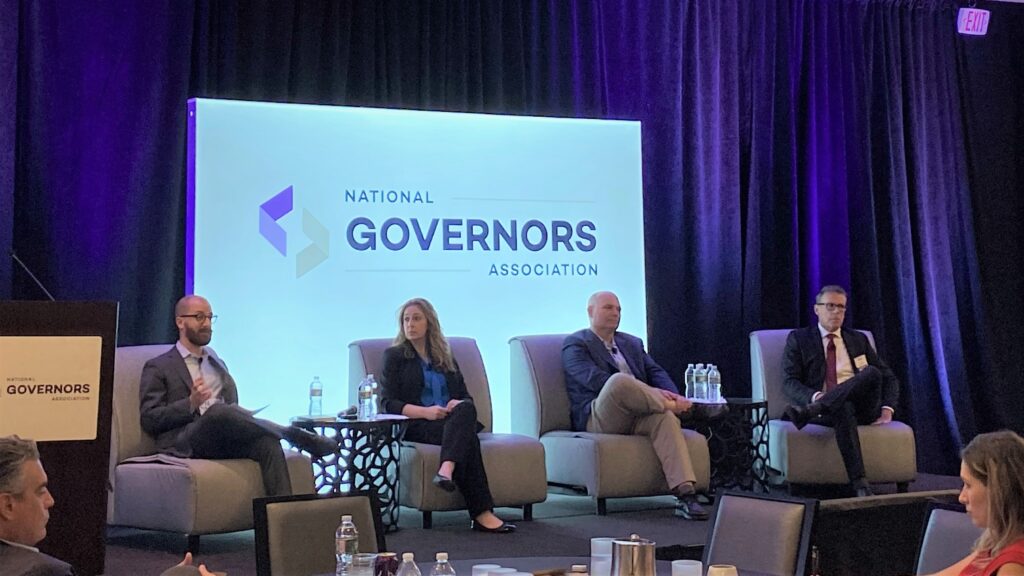
Pennsylvania: Workforce Executive Order
As states are making robust investments in energy infrastructure, a challenge faced by many states is supply chain and workforce constraints. Governors’ energy policy advisors are seeking state policy solutions that can be used to develop a robust talent pipeline for the energy sector and expand domestic manufacturing for energy technologies. Jacob Finkel, the Deputy Secretary of Policy for Pennsylvania Governor Josh Shapiro, joined a panel on energy workforce and supply chain constraints to discuss an innovative approach Pennsylvania is taking to invest in the workforce required to complete major infrastructure projects. Governor Shapiro signed an executive order to create the Commonwealth Workforce Transformation Program which will allocate 3 percent of all federal funding from grants awarded from the Infrastructure Investment and Jobs Act and Inflation Reduction Act into a state fund to provide up to $40,000 in reimbursement to employers that hire and train new employees or apprentices for infrastructure-related projects.
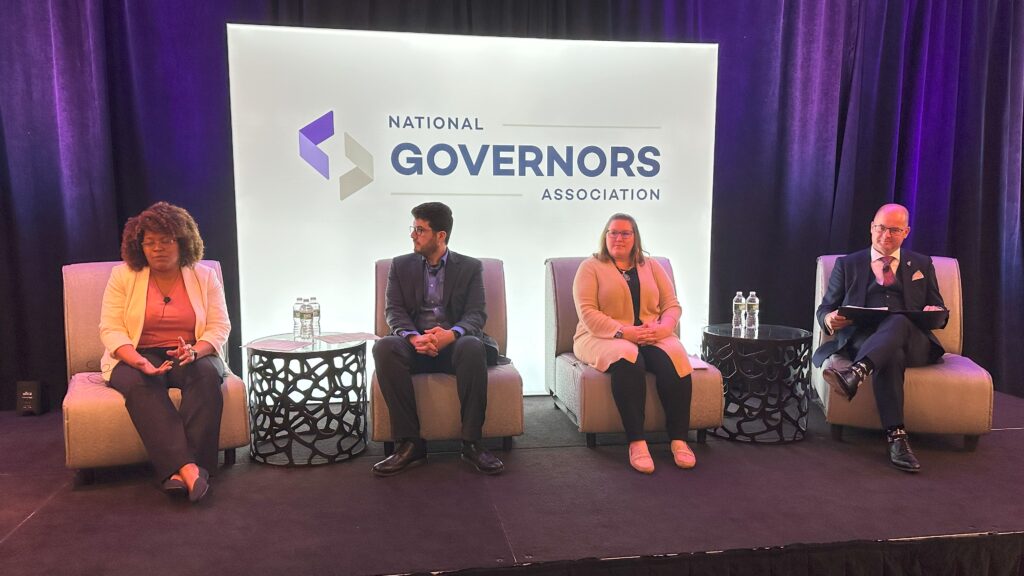
Wyoming: Coal Communities & the Energy Transformation
Jennifer Thompson, the Major Projects Manager for Wyoming Governor Mark Gordon, shared her insights on how Wyoming has ensured that traditional energy communities in the state are included in the energy transformation occurring in the United States. Ms. Thompson discussed the Wyoming Innovation Partnership that has worked in collaboration with the White House’s Interagency Working Group for Coal Impacted Communities and noted that the existing energy workforce in Wyoming has many critical, transferrable skills that could lend to the state becoming a leader in advanced energy technologies like nuclear, carbon capture and geothermal.
North Dakota: Carbon Capture Utilization & Storage

John Reiten, Policy Advisor for North Dakota Governor Doug Burgum, spoke about the investments North Dakota has made in Carbon Capture, Utilization, and Storage (CCUS) technologies. Describing North Dakota as the “geological jackpot,” Mr. Reiten discussed the potential for CCUS in North Dakota. North Dakota has taken a proactive approach to carbon capture, initiating planning processes early to establish primacy and protection and liability protocols. Mr. Reiten noted North Dakota’s early actions, dating back to 2003, to begin the permitting and regulatory processes to allow for carbon capture projects. In 2007, North Dakota created the initial rules to build a framework to apply for Class VI well primacy. Then, the state created a trust to take on the liability and long-term monitoring of sequestered carbon ten years after injections cease; this is intended to build private-sector confidence to make investments in these projects.
Oklahoma: Hydrogen Hub HALO Project

Scott Mason, Deputy Secretary of Energy for Oklahoma, spoke on the work Oklahoma has engaged in with Louisiana and Arkansas to create the HALO Hydrogen Hub. As a state with a broad mix of energy sources ranging from wind, natural gas, hydroelectric and solar, Oklahoma is collaborating across state and party lines to add hydrogen energy to the mix. This collaborative hub would transform hydrogen, the most abundant element, to support the electrical grid, transportation and strategic assets. Deputy Secretary Mason described the leadership Oklahoma Governor Kevin Stitt took to create an Oklahoma hydrogen taskforce and to connect with his fellow governors in Louisiana and Arkansas to develop a plan and compete for federal funding.
Energy is fundamental to every aspect of modern life, and Governors are hard at work to ensure that residents of their states and territories have reliable and affordable energy today and are positioned to meet the energy demands of the future. The NGA Center Energy and Environment teams serve as a critical resource for Governors and their energy policy advisors. For questions or technical assistance requests, contact Program Directors Dan Lauf or Jessica Rackley.


